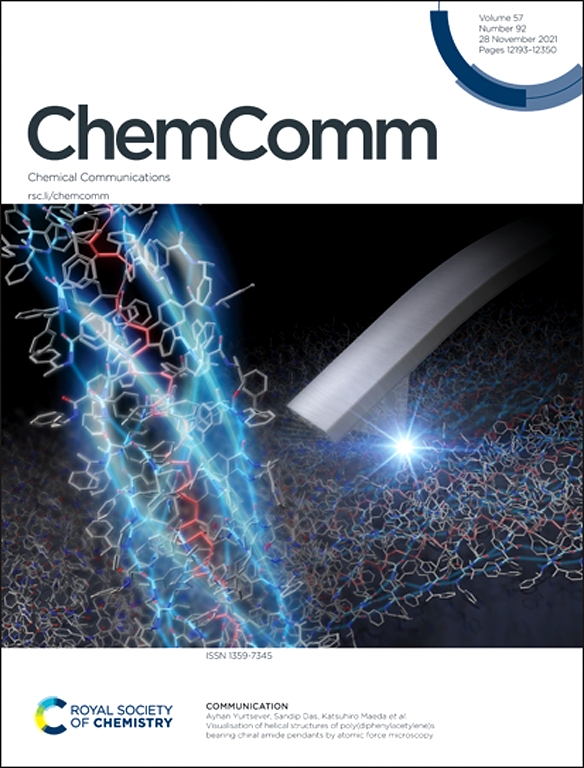内面金属富勒烯内部团簇动力学的自旋探针
IF 4.2
2区 化学
Q2 CHEMISTRY, MULTIDISCIPLINARY
引用次数: 0
摘要
内面体金属富勒烯(EMFs)是由富勒烯笼包裹各种金属原子或金属簇构成的,通常会发生一定的运动。然而,由于内面体动力学与许多因素有关,因此直到今天,对内部物种的运动进行成像仍然是一项挑战。最近,人们发现电子自旋是探测电磁场中内部物种运动的灵敏探针。此外,这一技术还可广泛应用于多种金属富勒烯,即对于顺磁性电磁场,未配对的电子自旋是内面体动力学的天然探针;而对于二磁性电磁场,则可引入电子以产生自旋活性电磁场分子。根据对电磁场的超频耦合常数(hfcc)、g 因子和 ESR 光谱线型的分析,可以推断出自旋中心和内面动力学。研究发现,自旋探针可以提供意想不到的 EMF 内部团簇动力学信息。通过改变温度、添加外面体和超分子组装,自旋探针可以操纵电磁场中内部物种的运动,并反映出这些运动。这些研究揭示了电磁场中的自旋在量子传感和分子机器技术中的应用前景。本文章由计算机程序翻译,如有差异,请以英文原文为准。

Spin probe for dynamics of the internal cluster in endohedral metallofullerenes
Endohedral metallofullerenes (EMFs) are constructed by fullerene cages encapsulating various metal atoms or metal clusters, which usually exhibit some motion. However, due to the fact that the elusive endohedral dynamics are related to many factors, it remains a challenge to image the motion of internal species. Recently, the electron spin was found to be a sensitive probe to detect the motion of internal species in EMFs. Moreover, this technique can be widely applied for many metallofullerenes, i.e., for paramagnetic EMFs, the unpaired electron spin is a natural probe for the endohedral dynamics, and for diamagnetic EMFs, an electron can be introduced to produce spin-active EMF molecules. Based on the analysis of hyperfine coupling constants (hfcc), g-factors, and line patterns of the ESR spectra of EMFs, the spin centers and endohedral dynamics can be deduced. It has been revealed that the spin probes can provide unexpected information about the dynamics of the internal clusters in EMFs. Through changing the temperature, exohedral modification of the EMF, and supramolecular assembly, the motion of the internal species in EMFs can be manipulated, as clearly reflected by the spin probe. These studies revealed that the spin in EMFs exhibits promising applications in quantum sensing and molecular machine technology. In this review, we will address the use of the spin probe in EMFs and attempt to understand the effects in the detection of the endohedral dynamics.
求助全文
通过发布文献求助,成功后即可免费获取论文全文。
去求助
来源期刊

Chemical Communications
化学-化学综合
CiteScore
8.60
自引率
4.10%
发文量
2705
审稿时长
1.4 months
期刊介绍:
ChemComm (Chemical Communications) is renowned as the fastest publisher of articles providing information on new avenues of research, drawn from all the world''s major areas of chemical research.
 求助内容:
求助内容: 应助结果提醒方式:
应助结果提醒方式:


